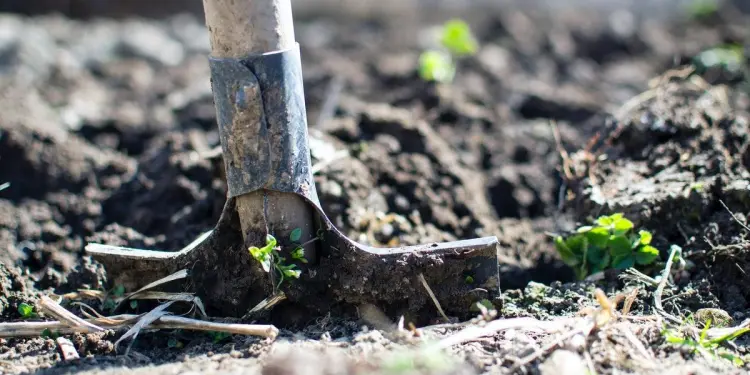The task ahead is enormous for Nigerian banker and AfDB President, Akinwumi Adesina;
With COVID-19 disruption, the AfDB leader believes an increase in economic infrastructure, quality physical infrastructure, and quality health infrastructure will tame the negative impact;
In his second term, Adesina must address Africa’s food challenges by developing internal institutional capacity to ensure successive agriculture production.
Dr Adesina vs Africa’s Agro-economy
Election and politicking are over. It is now time for the job, and the task ahead is enormous for Nigerian banker, Akinwumi Adesina. On Tuesday, September 2, 2020, Dr Adesina was sworn-in for another year in office. Just like five years ago, the future of Africa in economic prosperity is now on his team at the AfDB. What would they make of it?
In the last five years, Adesina developed five priority areas for banks (High5s) – a 10-Year Strategy for accelerating Africa’s development; viz: Light up and Power Africa; Feed Africa; Industrialise Africa; Integrate Africa; Improve the Quality of Life of the people of Africa. In his re-election speech, he remarked on how these programmes affected 335 million people.
What would he be returning to?
In his speech, Dr Adesina said the Development Bank, through its High 5s, influenced 335 million people in the last five years. According to him, the Bank also facilitated 15 million people on the continent with improved access to private investment and access to electricity.
Speaking further, he said the AfDB would continue to focus its attention on quality health care infrastructure in Africa. With COVID-19 affecting the world, the AfDB leader believes an increase in economic infrastructure, quality physical infrastructure, and quality health infrastructure will tame the negative impact.
Just like his 2015 promises, the international banker says he is looking ahead to building up Africa’s manufacturing capacity, industrial development, and critically needed industrial value chains.
“Adesina’s re-election is a welcome development for Africa, and his integrity has added value to Africa’s image globally,” Oluwaseyi Babaeko, the General Manager of Babaeko Farms told Dataphyte in a phone conversation.
“However, the agricultural sector challenges are enormous in Africa. There is an urgent need for the development of peculiar policies and actionable programmes for the continent to quickly avert the looming food crisis as a result of COVID-19.”
Babaeko added that in Nigeria, farmers want the government to act as a mediator for dialogue with herdsmen in the southwest and other parts of the country.
So what lies ahead for AfDB
From the farmers cultivating cashew nuts in far-away Tanzania’s Mtwara village, to cassava farmers in Nigeria’s Oke-Ogun region, logistics and continental trade barriers are some issues facing the agricultural sector. These challenges are enormous, coupled with the growing population, both adversely affecting Agro end-production.
In its report, World Vision also showed that hunger is increasing at an alarming rate in Africa, with about 257 million people experiencing hunger. That figure is about 20% of the continent’s population.
Again, the Global Food Security Index, which also remarked on the food insecurity challenge in Africa, highlighted some interesting points. According to the index, the problems were most times beyond agricultural output; they also stemmed from internal and external conflict, poverty and under-development, and environmental disaster.
Tackling food insecurity
It is clear the challenges that face the African Agro-economy cut across board. So much so that the World Bank remarked on the need for a sustainable farming model. But rather than outward looking, this is perhaps the time for a continent-wide introspection; first stop being collaboration. AfDB ought to work with other development agencies, to see how Africans can feed themselves, ensuring an end to the food crisis as the population escalates. The Bank also needs to develop internal institutional capacity that ensures successive crop cultivation. Also important would harvest across the continent.
The success of Africa Trade Pact
Another intervention could be the Africa Continental Free Trade Area (AfCFTA). And although the pandemic resulted in a rescheduled date and may distort some of its activities, the pact still holds promise. As a result, the AfDB needs to step up and support African leaders in achieving this potential. Many have lauded the AfCFTA as the largest free-trade area in the world. And should it start, it would not only ease logistic problems for farmers, but ensure easy passage of goods and services across the continent. The trade agreement could also cut imports, boost agriculture and industrial exports. More importantly, these are in tandem with the operations of the African Development Bank. Hence, collaborating with the AfCFTA secretariat will go a long way in assisting farmers and small and medium enterprises (SMEs) excel.
Scaling up AfDB’s High 5s
Last, the AfDB president needs to do more a regards implementation of the High 5s strategy; its 10-year tenure elapses in two years. And while the task ahead is arduous, it is reminiscent of the quote “to whom much is given, much is expected.” Indeed, the nation waits in anticipation concerning the outcome of Adesina’s five core objectives. A scheme which puts infrastructural development; regional economic integration; private sector development; governance and accountability; skills and technology at the front burner of Africa’s transformation. Most noteworthy, the success of the programme means success in Africa regarding the achievement of the Sustainable Development Goals; thus eliminating poverty in a decade.


